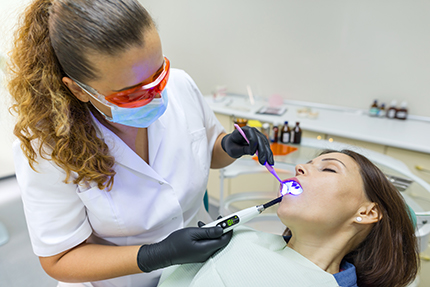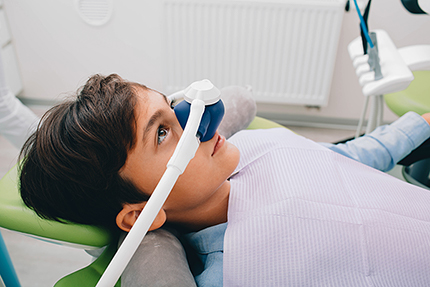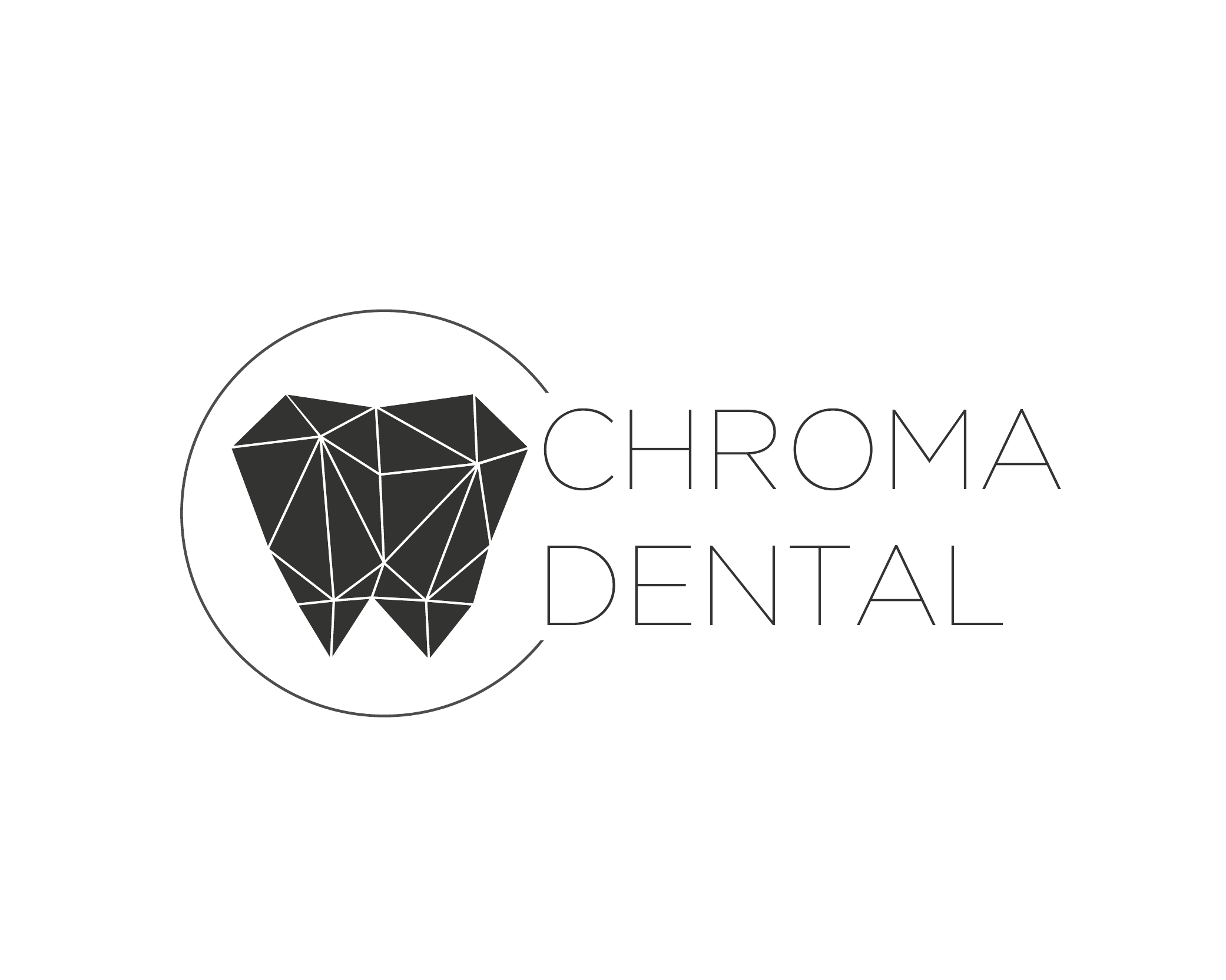Anxiety about dental visits is more common than many people realize — studies estimate that tens of millions of Americans experience significant fear when it comes to dental care. If worries about discomfort, sound, or loss of control keep you from getting the treatment you need, the office of Chroma Dental offers proven sedation options designed to make dental visits calm, efficient, and predictable. Our goal is to remove fear as a barrier so patients can pursue long-term oral health with confidence.
Sedation dentistry is not about taking shortcuts; it’s about changing the experience of care so procedures are more tolerable for patients who are anxious, sensitive, or require extensive treatment. Administered responsibly by trained professionals and tailored to each patient’s medical history and treatment needs, sedation allows the dentist to deliver care while the patient remains comfortable and cooperative.
Choosing sedation can mean the difference between delaying necessary work and addressing issues early, when they’re easier to manage. In the paragraphs that follow, you’ll find clear explanations of how sedation works, who benefits most, the options commonly used in dental offices, and what to expect before, during, and after treatment.
Sedation dentistry reduces the body’s natural stress response so that a dental appointment feels calm rather than overwhelming. Depending on the method selected, sedation can produce feelings ranging from gentle relaxation to a deeper, dreamlike state while preserving basic responsiveness. The effect is to lower anxiety, minimize memory of the procedure, and allow patients to tolerate exams and treatment without distress.
Importantly, sedation supplements — it does not replace — standard pain control. Local anesthetic is still used to eliminate sensation in the treatment area; sedation focuses on easing fear and discomfort related to the environment, sounds, or anticipation of treatment. That combination helps patients remain comfortable even during more involved procedures.
Modern sedation techniques are administered and monitored with safety as the priority. Dental teams are trained to observe vital signs and patient responsiveness throughout the appointment, and they adjust medication levels as needed to maintain both comfort and stability. For many patients, the result is a smoother, less taxing visit and a better likelihood of keeping up with preventive care.
Sedation is appropriate for a wide range of patients and situations. People who avoid the dentist because of fear or past unpleasant experiences often find sedation is the key to finally receiving the care they need. Instead of letting anxiety determine oral health outcomes, sedation creates a controlled environment where treatment can proceed safely and effectively.
Gagging, hypersensitivity, or a low tolerance for dental instruments are other common reasons to consider sedation. What might be a minor nuisance for some patients can be an insurmountable obstacle for others; sedation reduces reflexes and sensory overload so the clinician can work without interruption and the patient can remain comfortable.
Extensive treatment plans that require long chair times or multiple procedures in a single visit also benefit from sedation. For patients who prefer to minimize appointments or who have medical or practical limitations that make repeated visits difficult, sedation can make longer, consolidated sessions feasible and far less stressful.
Sedation is likewise a useful tool for patients with special needs, young people who can’t tolerate routine care, or those with medical conditions that make hurried or tense visits risky. Each case is evaluated on its own merits to match the level of sedation to the patient’s physical and emotional needs.

Selecting the right sedation method begins with a careful review of medical history, current medications, allergies, and the scope of dental work planned. The dentist will also discuss previous responses to sedatives or anesthetics and any health conditions that might influence choice or monitoring requirements. This pre-treatment evaluation ensures sedation is tailored to the individual.
For routine procedures and mild anxiety, lighter options such as inhaled nitrous oxide may be sufficient. For more significant anxiety or longer procedures, oral medication or intravenous (IV) sedation can be selected and adjusted to achieve the desired level of relaxation. The aim is always to use the minimum effective level of sedation for the safest, most comfortable experience.
Monitoring is integral: oxygenation, heart rate, and breathing are observed throughout treatment, and a trained clinician is present to respond immediately to any change. Because each patient metabolizes medications differently, the team remains attentive from induction through recovery to ensure a stable and comfortable experience.
Conscious sedation allows patients to remain breathing independently and to respond to verbal cues while experiencing marked relaxation and reduced awareness of the procedure. This category covers inhalation (nitrous oxide), oral medications, and IV sedation at levels administered in the dental office. Recovery is typically swift, though some methods require an escort home and a period of rest.
General anesthesia, in contrast, produces a controlled, unconscious state and is used in hospital settings under the care of an anesthesiologist for cases where office-based sedation is insufficient or contraindicated. It is reserved for specific medical or procedural needs and involves a higher level of monitoring and a different recovery pathway.
Inhaled nitrous oxide is a fast-acting sedative that provides mild to moderate relaxation and wears off quickly once the gas is stopped. Because it is delivered with oxygen and titrated to effect, nitrous oxide is often favored for shorter visits or for patients who want a predictable, easily reversible option.

Preparation helps ensure a smooth sedation experience. Before any sedative is administered, the team will review health history and advise on medication management, eating and drinking guidelines for certain types of sedation, and whether an escort is required. Following these instructions reduces risk and supports predictable recovery.
Immediately after treatment, the practice will monitor the patient until it is safe to leave. Depending on the method used, some residual drowsiness or slowed reflexes can persist for several hours, so rest and avoidance of driving or operating heavy machinery are recommended for the remainder of the day.
Post-operative instructions focus on comfort, managing mild side effects if they appear, and a clear schedule for follow-up. The team will explain any specific care steps related to the dental work itself as well as signs that warrant more immediate attention, so patients can resume normal activities with confidence.
Sedation in dentistry is effective when it is practiced within a framework of strict safety protocols. That means appropriate patient screening, careful dosing, continuous monitoring, and a trained team prepared to intervene if needed. Office-based sedation follows established guidelines to ensure that relaxation never comes at the expense of safety.
Your dental team’s experience and training affect the quality of the sedation experience. Staff competence in airway management, emergency protocols, and monitoring equipment are essential components of responsible sedation practice. When these elements are in place, sedation supports both patient comfort and clinical precision.
If you have questions about whether sedation is right for you or how a particular method might fit your needs, the practice is available to discuss options and walk you through the process. A thoughtful conversation before treatment is the best way to match clinical goals with the appropriate level of sedation.
In summary, sedation dentistry is a reliable, well-established way to reduce anxiety, improve comfort, and make dental care accessible to patients who otherwise might avoid treatment. If fear, sensitivity, gagging, or the need for lengthy procedures have prevented you from getting the care you deserve, consider speaking with our team about personalized sedation options. Contact us to learn more about how sedation can make your next dental visit easier and more comfortable.
Sedation dentistry offers patients with general anxiety or fears about a dental procedure the opportunity to have a more comfortable and stress-free experience. By utilizing safe and controlled sedation techniques, the patient is eased into a state of complete relaxation before the procedure. This approach eliminates discomfort, pain, and preoperative anxiety, and typically makes patients feel more at ease post-operatively, as they have little or no memory of the actual moment-to-moment procedure.
Local anesthesia involves an injection directly into or close to the area where a procedure is being performed. While it eliminates any sensation of pain in the targeted area, it does not affect your state of mind or level of anxiety. When a patient receives sedation, additional medications to ease anxiety and promote relaxation are employed in advance of local anesthesia. In this way, both the stress and discomfort associated with a procedure are eliminated. Sedation can be administered in a variety of forms based upon patient needs and the recommendations of the dentist or dental anesthesiologist.
Choosing the most appropriate method of sedation for a procedure depends on a variety of factors such as a patient's medical history and their level of anxiety. Dental sedation can come in the form of nitrous oxide sedation, oral conscious sedation, and IV sedation. Certain patients receiving comprehensive treatment or undergoing a complex surgical procedure may require general anesthesia in a hospital setting.
Nitrous oxide, or "laughing gas," is a mild sedative, which is inhaled through a small mask over the nose. A standard in dental sedation for decades, the effects of nitrous oxide are almost immediate and wear off quickly once your procedure is completed.
Oral sedation involves the prescription of an oral medication prior to your appointment. Taken at the recommended time before your visit, oral sedation allows you to feel fully relaxed by the time you're ready for your procedure. With oral sedation, it's necessary to plan on having an escort to and from your dentist's office.
IV Sedation is administered intravenously, or directly into a vein. It is typically indicated when a deeper state of sedation is required. Your dentist will provide you with specific instructions before your visit, and require that you have an escort for the trip home from your appointment.
